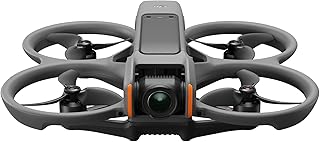DJI Drone Battery Life: Everything You Need to Know
DJI drones are renowned for their impressive flight performance and features, but battery life remains a crucial consideration for any drone user. This comprehensive guide will cover everything you need to know about DJI drone battery life, including:
1. Understanding Battery Capacity and Flight Time:
* Battery Capacity: Measured in milliampere-hours (mAh), this indicates the battery's energy storage potential. Higher mAh means more power and longer flight time.
* Flight Time: The actual flight time depends on various factors including:
* Drone Model: Different models have different battery capacities and energy consumption rates.
* Flight Conditions: Wind, temperature, and altitude all impact battery life.
* Flight Mode: Aggressive flight maneuvers, camera use, and features like obstacle avoidance consume more power.
2. Factors Affecting Battery Life:
* Temperature: Extreme heat or cold drastically reduces battery performance. DJI recommends operating within the specified temperature range.
* Wind: Flying against strong winds increases energy consumption, shortening flight time.
* Altitude: Higher altitudes require more power for the drone to stay airborne.
* Camera Usage: Continuous video recording and high-resolution photo capture consume more power.
* Flight Mode: Sport mode or other aggressive flight modes demand more energy.
* Battery Age: Over time, batteries lose their capacity and charge retention, affecting flight time.
3. Maximizing Battery Life:
* Pre-Flight Battery Charging: Always charge your batteries fully before each flight.
* Optimizing Flight Settings: Reduce camera resolution or video bitrate for longer flight times.
* Flying in Calm Conditions: Choose windless days and avoid flying at high altitudes.
* Avoid Extreme Temperatures: Fly within the recommended operating temperature range.
* Minimize Power Consumption: Avoid unnecessary maneuvers and minimize camera usage when possible.
4. Battery Care and Maintenance:
* Storage: Store batteries in a cool, dry place away from direct sunlight.
* Charging: Use the official DJI charger for optimal performance and safety.
* Calibration: Periodically calibrate your batteries to ensure accurate battery level readings.
* Replacement: Replace batteries when their capacity drops significantly, indicated by shorter flight times or charging issues.
5. DJI Drone Battery Options:
* Standard Batteries: The most common type, available in different capacities for various drone models.
* Intelligent Flight Batteries: Offer additional features like smart battery management, real-time battery status updates, and extended flight time.
* Extended Flight Batteries: Designed for longer flight durations, typically with higher mAh capacities.
6. Additional Considerations:
* Spare Batteries: Carry extra batteries for extended flights or multiple sessions.
* Battery Charger: Choose a charger that matches the battery type and charging capacity.
* Battery Storage Case: Protect batteries from damage and dust during transport.
* Battery Safety: Always handle and charge batteries with caution.
Conclusion:
Understanding DJI drone battery life is crucial for maximizing flight time and enjoying your drone experience to the fullest. By following these tips, you can extend battery life, ensure safe operation, and capture stunning aerial footage.


